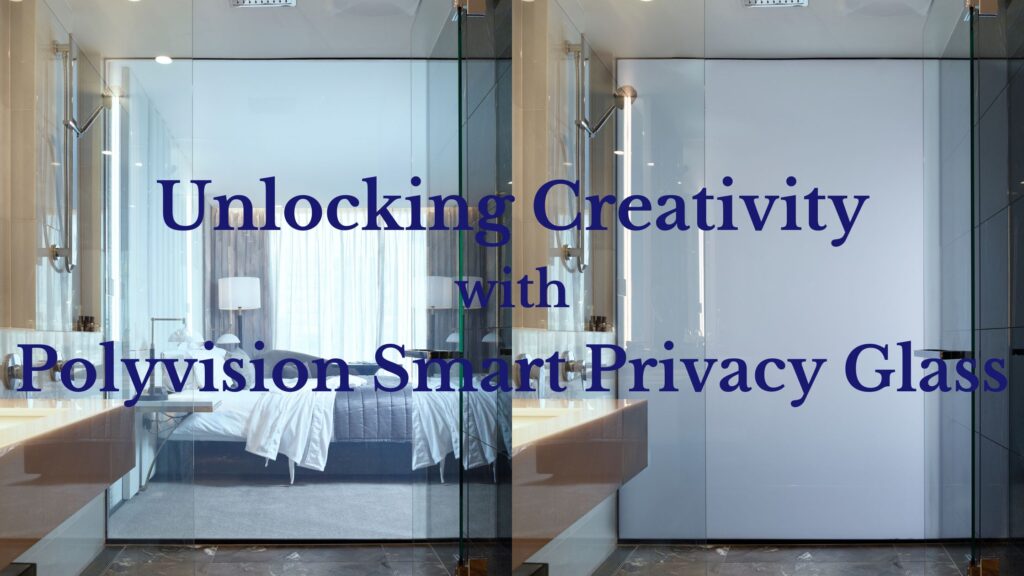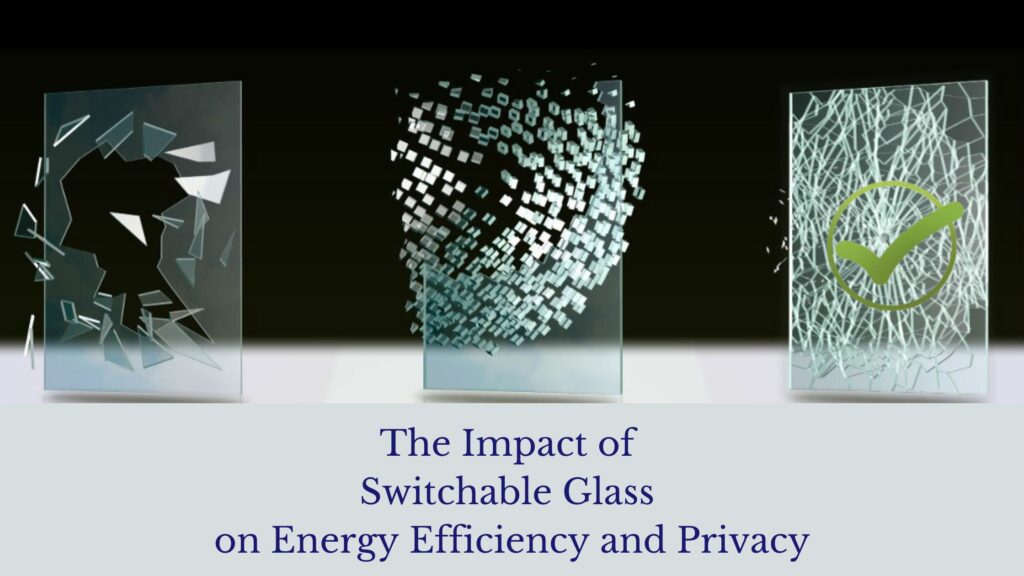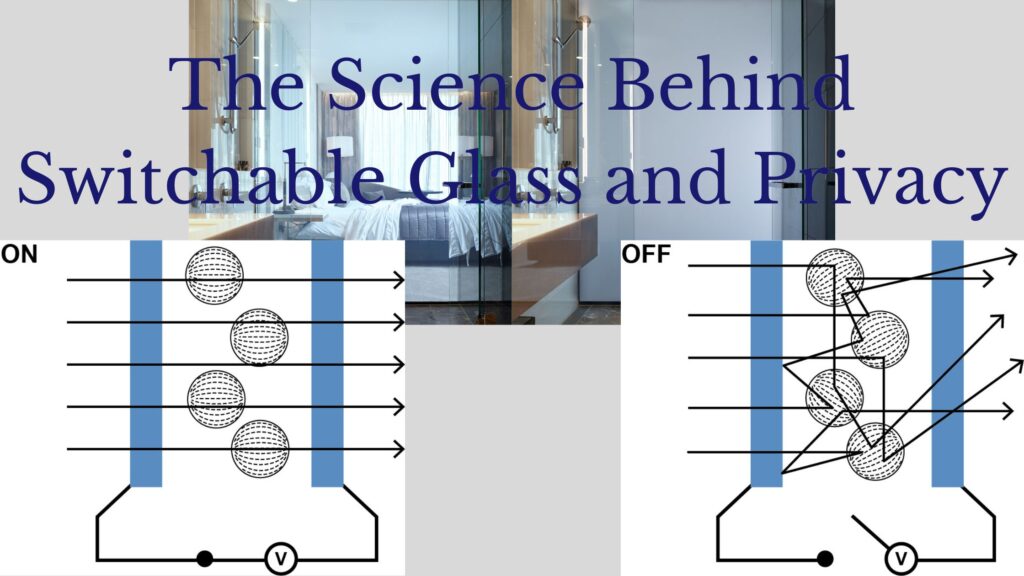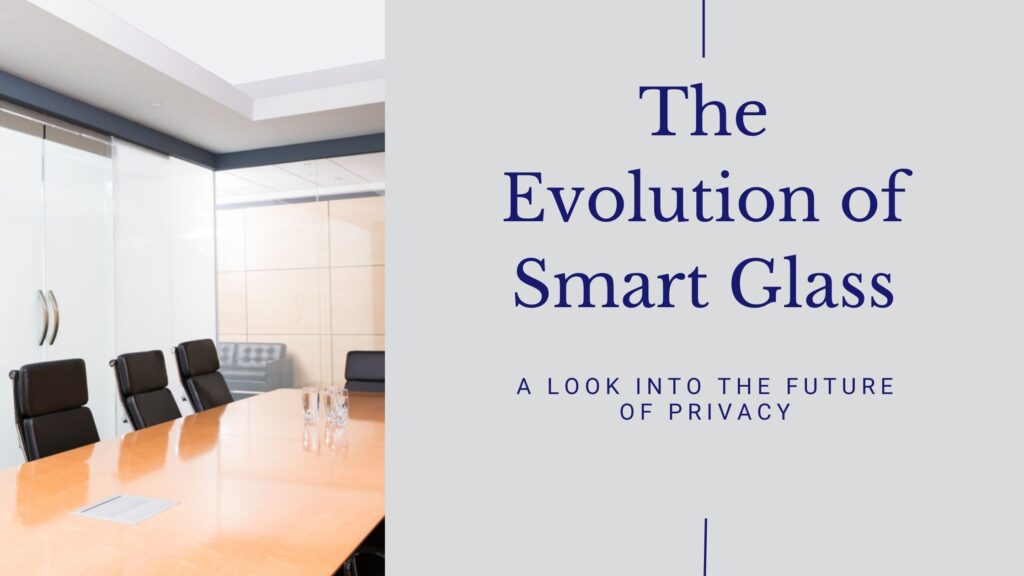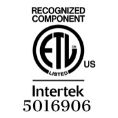In our lifetime, there are inventions that come along that can truly aid and inspire further inventions and designs. Polyvision® Smart Privacy Glass is one such ground-breaking invention that is revolutionizing work and living spaces and redefining privacy. Polytronix, Inc. gave designers the opportunity for artistic expression, but it also has transformative powers that conflate privacy with design.
The Evolution of Privacy: From Opaque to Transparent
Polyvision® Smart Privacy Glass is not your typical glass; with a simple flip of a switch or a push of a remote button, it can effortlessly change from an opaque white film to a transparent, crystal-clear material. With this revolutionary feature, people can take control of their visibility and have privacy whenever they want or need, without sacrificing natural light or obstruction of view.
A Canvas for Design Innovation
Beyond just its functional features, Polyvision® Smart Privacy Glass is incredibly versatile. Because of its dynamic qualities, it’s the perfect medium for architects, designers, and other creative types who want to give living and workspaces a useful and stylish edge. Simple glass transforms into a modern element that can be used in boardrooms or opulent mansions, depending on the situation, improving the overall aesthetics of any space.
Applications in Interior and Exterior Settings
This cutting-edge glass technology isn’t just for interior areas. Its versatility expands with its adaptability for external installations, enabling the construction of distinctive façades, modern office buildings, and exciting storefronts. Because of the glass’s capacity to transition between opaque and transparent phases, architects can experiment with light, shadow, and spatial orientation to create unique and visually striking designs.
Bridging Functionality and Creativity
Polyvision® Smart Privacy Glass is genuinely a revolutionary product because it seamlessly combines creativity with utility. It gives architects and designers the freedom to go beyond the box and produce adaptable, flexible spaces that value seclusion as much as aesthetics. This adaptability fosters a new era of design innovation by opening doors to limitless possibilities.
Embracing the Future of Design with Polytronix, Inc.
Polytronix, Inc.‘s dedication to innovation and quality is demonstrated by their creation of Polyvision® Smart Privacy Glass. Their commitment to expanding the realm of feasible privacy solutions has cleared the path for a time when functionality and design will smoothly blend in the future.
Polyvision® Smart Privacy Glass is more than just a window—it encourages innovation. Its adaptability unlocks new design possibilities and provides a dynamic platform for inventive and eloquent expression, while maintaining privacy as the primary operation.
Polyvision® Smart Privacy Glass is transforming the way we view and interact with our living and working spaces by bridging the gap between functionality and creativity, whether it is applied to architectural marvels, elegant interior designs, or aspiring exteriors.
